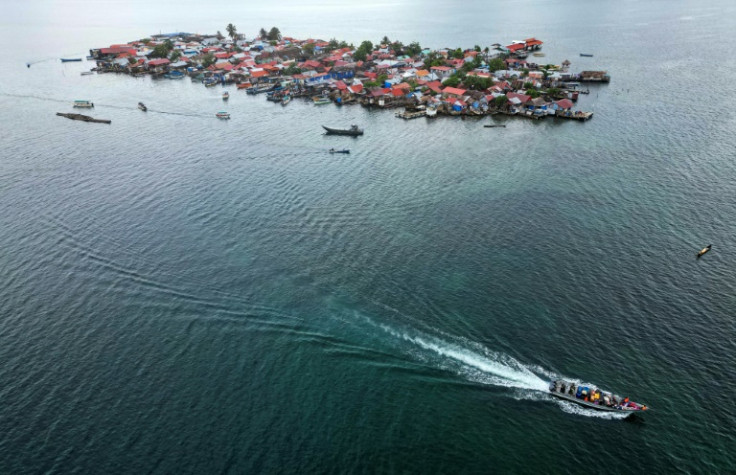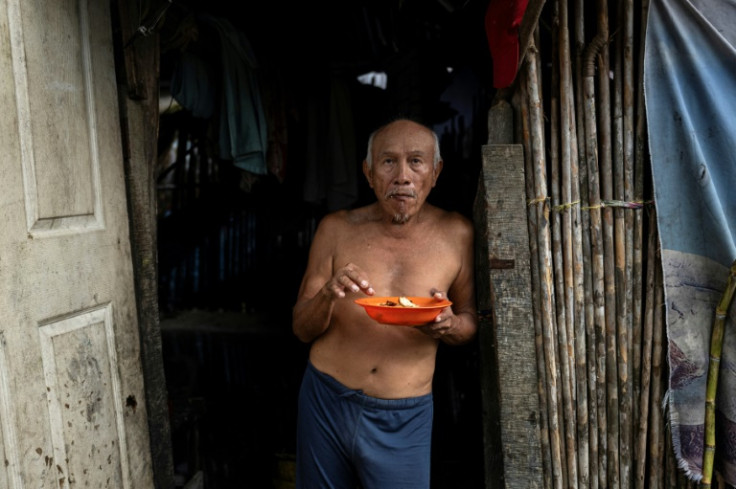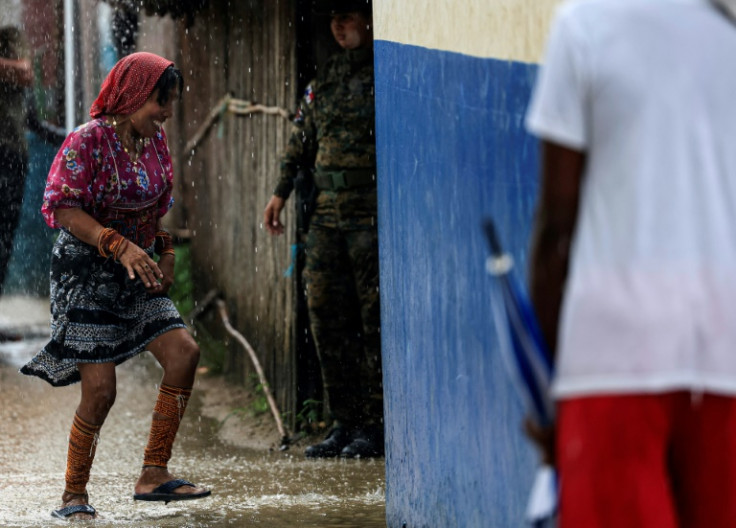'Life Goes On' - Panama Islanders Relocated As Sea Level Rises

Alberto Lopez prepares breakfast with water lapping at his ankles. The day began with rain, and his ramshackle home on the Panamanian island of Carti Sugtupu was flooded, not for the first time.
Lopez is one of 1,200 Indigenous residents of the island being relocated to the mainland, as sea level rise due to global warming threatens to permanently devour their ancestral home.
The community is the first in Panama to be displaced by climate change.
Since Monday, residents have been packing and moving their belongings by boat to the Nuevo Carti (New Carti) settlement built for them by the government in the Guna Yala Indigenous region on Panama's Caribbean coast.
On the island, Lopez lives in a small house with a dirt floor, no toilet, and only intermittent electricity.
In preparation for the move, his family is stacking clothes and other meager belongings on a small table at the front door, along with cleaning supplies and a Bible.
Their destination, Nuevo Carti, boasts houses that each have two bedrooms, a living and dining room, kitchen, bathroom and laundry -- all with potable water and electricity.
Each house is about 41 square meters (441 square feet) on a plot of 300 square meters, and there are common cultural spaces and facilities for disabled people.
The conditions are undoubtedly better, but the community has mixed feelings nevertheless.
"We are sad because if this island disappears, a part of our heart, of our culture, disappears with it," said Lopez, who was born on Carti Sugtupu 72 years ago.
As a child, he fished there, as do most islanders, and worked in the fields on the mainland.
His mother sent him to study in Panama City, where he lived for more than 30 years before returning home.
"I came back because my heart wanted me here, and this house is the one my family left me," Lopez told AFP.
"My grandmother, my grandfather and my aunt died here... it's not going to be the same, but I have to move on because life goes on," he added.
On Carti Sugtupu, the size of five football fields, Lopez and his fellow islanders lived in overcrowded conditions with few basic services.
They use communal toilets with pieces of timber laid down as seats.
The community lived off fishing, the harvesting of starchy crops like cassava and plantains, traditional textile production, and some tourism.
Their homes flooded on a regular basis, and the government expects that by 2050, Carti Sugtupu will be completely under water, along with several other islands in the archipelago of 350, only 49 of them inhabited.
All are between 50 centimeters (19 inches) and one meter (about three feet) above sea level.
Scientists say climate change is causing sea levels to rise, mainly due to meltwater from warming glaciers and ice sheets.
President Laurentino Cortizo said recently the government was studying which other communities may have to be moved next.
On Monday, the first day of the mass transfer, police helped the community move their belongings to their new homes.
At a small pier, the officers helped load furniture, buckets of clothes, plastic chairs, some appliances and a stuffed animal for the 15-minute boat trip.
"I am sad to leave this house," said Idelicia Avila, 42, adding: "We are moving because there's no room for us here" on the island.
Nuevo Carti was erected by the government at a cost of $12.2 million, transferring ownership to the community.
Lopez will live in house number 256 with three sisters and a daughter.
He hopes to grow crops such as pumpkins, cassava, pineapples or bananas to sell, and is already planning where the furniture and appliances will go -- and even contemplating a possible extension to his new house.
"Here we have everything to bathe... there (on the island) we don't have that," he said as he showed AFP around his new bathroom.
"Of course, everyone is happy, but it's a brutal change."




© Copyright AFP 2024. All rights reserved.





















